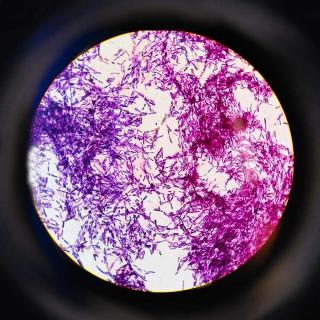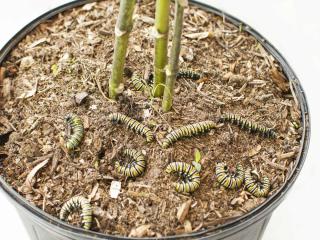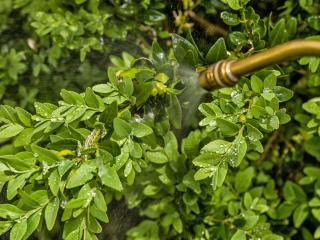

Today, chemical insecticides are no longer an option for gardeners. And that’s a good thing! But pests haven’t gotten the message that they’re not welcome… An invasion of pests can destroy a crop in a few days or weeks, to the gardener’s great despair. One fully organic solution in particular is very effective against fluttering insects like butterflies and moths: bacterium Bacillus thuringiensis. And Bt is harmless to beneficial insects, too!
→ Also read:
Bacillus thuringiensis is the scientific name of a bacterium commonly known as “Bt”. It is a bacterium used for biological pest control in vegetable gardens. Bt was identified in 1901 by a Japanese bacteriologist named Shigetane Ishiwata, who was working with silkworms. This bacterium kept infecting and killing his silkworms.

It is a ubiquitous bacterium, meaning that it is found everywhere in nature, both in soil and water, in the air, and on the foliage of plants, in a completely natural way. It is also said to be aerobic, which means that it develops in the ambient air.
When observed under a microscope, Bacillus thuringiensis looks like a rod-shaped bacterium with flagella, measuring a few micrometers in length.

Without delving into (too) scientific details, there are different strains of Bacillus thuringiensis. Each is better at targeting specific classes of insects, especially lepidoptera such as butterflies. The bacterium primarily eliminates caterpillars which usually attack numerous produce in the vegetable patch, orchard and eat up ornamental plants and shrubs:
Bacillus thuringiensis also works great against the Colorado potato beetle.
This bacterium, which is a living organism, is dormant in the form of a powder to dilute in water. You can find it in specialized stores, garden centers, and websites dedicated to plants. Since it has a shelf life of approximately one year, it is important to check the expiration date on the package. Store it in a dry, dark room at a temperature of around 68 to 77 °F (20 to 25 °C), and out of reach of children.

When applying the treatment, it is better to wear gloves, a mask, and goggles. Even though Bacillus thuringiensis is used in organic farming, ingesting or getting covered with high doses of the bacteria isn’t comfortable.
Spray the solution on topside and underside of leaves and on stems infested by caterpillars.
Note that Bacillus thuringiensis is a curative product, not preventive. Therefore, there is no need to apply it to non-infested vegetable plants. Use pheromone traps to pinpoint the time when insects mate. With this knowledge, you can schedule when the first caterpillars are expected to hatch. That’s when to start treating with Bt.
Similarly, remember that the toxin secreted by this pathogenic bacterium has a low persistence. This means that ultraviolet rays destroy it within a few hours after spraying.
To learn more: